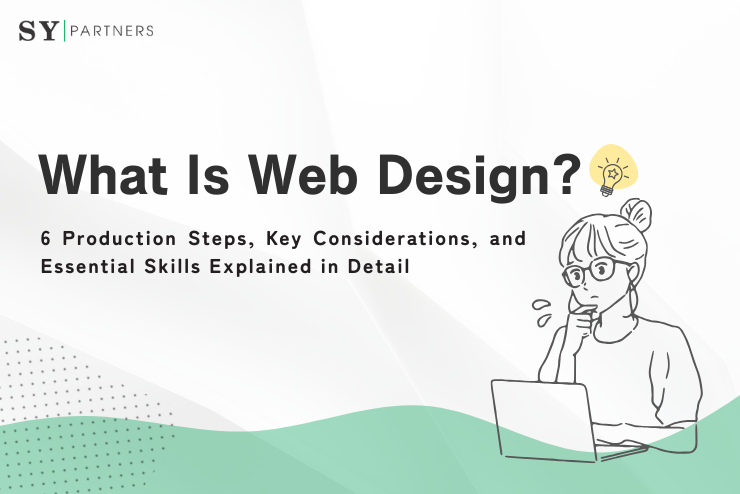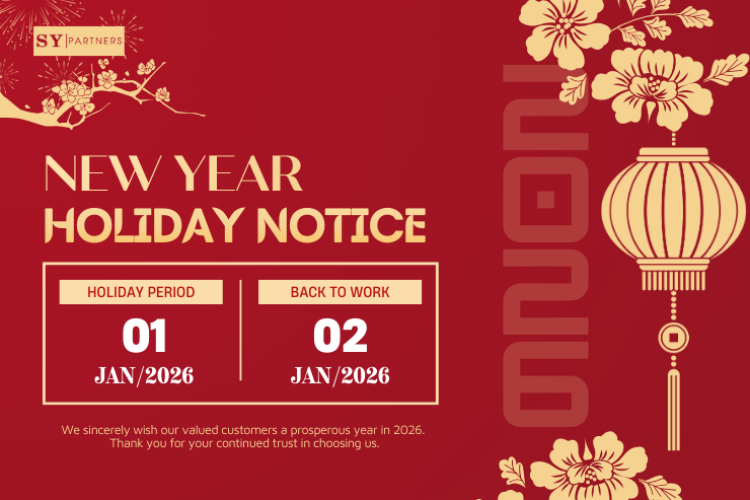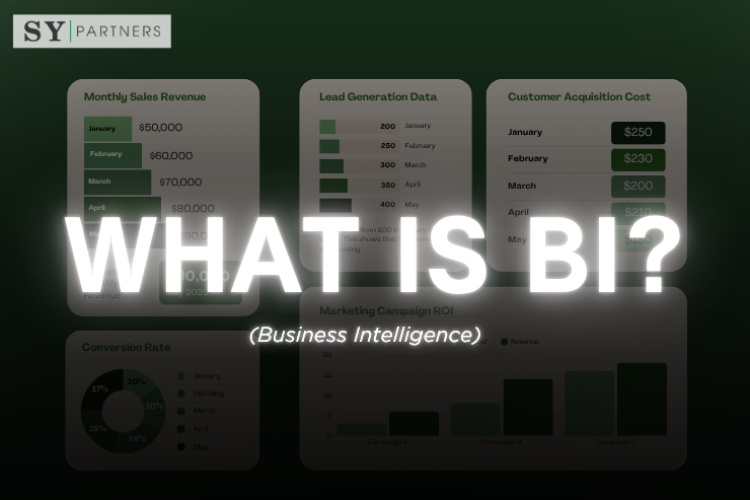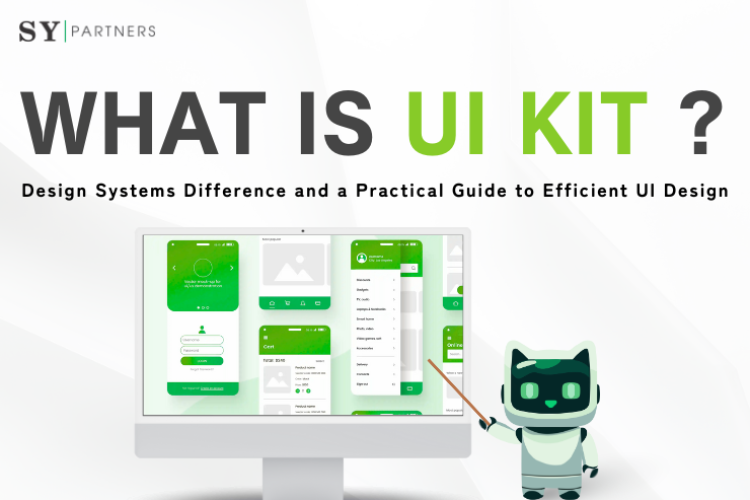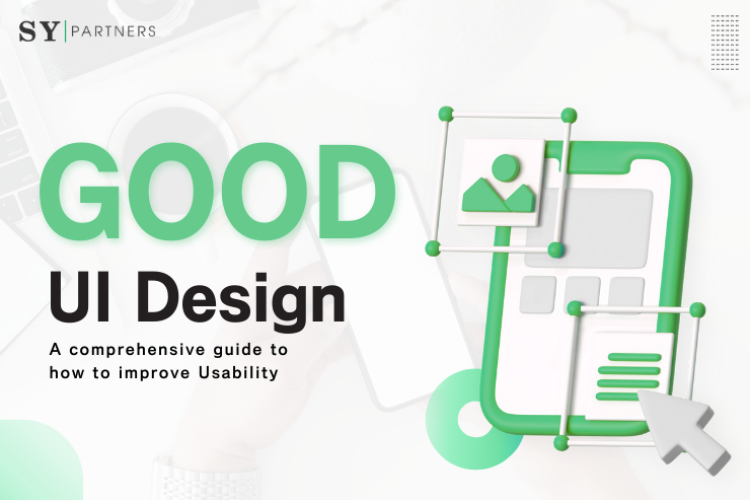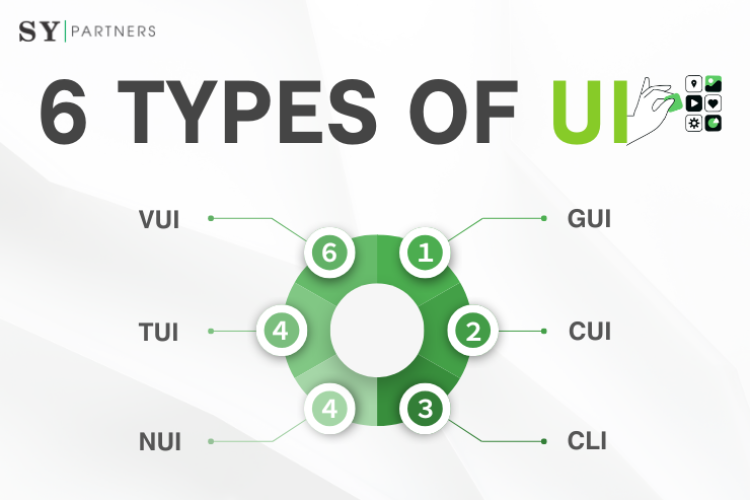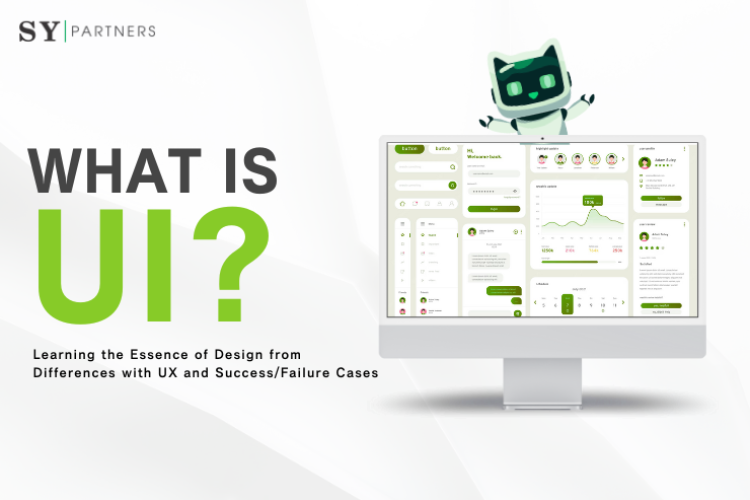What Is Web Design? 6 Production Steps, Key Considerations, and Essential Skills Explained in Detail
Web design is an essential means for companies and individuals to establish an online presence in today’s digital society. It goes beyond mere visual decoration and requires providing users with an intuitive, efficient experience that allows them to obtain information smoothly. For example, in an e-commerce site, it is necessary to simplify the purchase process, while in an information site, readability of content must be enhanced.
This article explains the fundamental concepts of web design, the specific steps of production, key considerations for ensuring project success, and the skills required to thrive as a professional. From beginners to intermediate-level practitioners, it provides systematic and practical knowledge that can be applied in real work. If you want to gain a deep understanding of design theory and techniques and apply them to actual projects, be sure to read until the end.
1. What Is Web Design?
Web design is the process of designing the visual elements (layout, color scheme, typography) and functional elements (navigation, interaction) of a website. Its purpose is to provide users with a comfortable experience while effectively communicating the brand’s message.
Web design is not just about making things “look beautiful”; it plays a strategic role in helping users achieve their goals and supporting business objectives.
The purposes of web design are diverse. The table below organizes the main objectives:
| Purpose | Details |
|---|---|
| Improve User Experience | Enhance user satisfaction through intuitive operability and clear visuals. |
| Build Brand Image | Express the personality of a company or service visually through color schemes and fonts. |
| Achieve Business Goals | Improve conversion rates such as purchases, registrations, and inquiries. |
| Ensure Consistency Across Devices | Provide a unified experience across PCs, smartphones, and tablets. |
To achieve these goals, it is essential to balance aesthetics and functionality. For example, overly complex animations can slow down page loading speed, causing users to leave. Thus, both visual appeal and performance optimization must be considered.
2. Relationship Between Web Design and UI/UX Design
Web design is a broad concept that encompasses UI (User Interface) design and UX (User Experience) design.
- UI design focuses on the visual design of interactive elements such as buttons and menus.
- UX design focuses on the overall user experience when interacting with a website (e.g., smoothness of operation, time required to access information).
Relationship Between Web Design and UI/UX Design
Web design integrates these aspects, ensuring harmony between visuals and functionality.
| Item | Web Design | UI Design | UX Design |
|---|---|---|---|
| Focus | Overall visual and functional design of the website | Visual elements of the interface (buttons, icons, etc.) | Overall user experience and satisfaction |
| Purpose | Balance beauty and functionality | Provide intuitive operability | Design processes that meet user needs |
| Main Tasks | Designing layout, colors, typography | Designing buttons, forms, and interactions | Conducting user research, creating wireframes |
For example, while UI design determines the shape and color of the “Add to Cart” button, web design considers how that button harmonizes with the overall site color scheme and brand image.
3. Six Production Steps of Web Design
The web design process may vary depending on project size and purpose, but the following six steps represent the standard workflow. Each step is analyzed in detail with explanations on how to apply it to real projects.
3.1 Step 1: Research and Requirement Definition
The first step in web design is research and requirement definition, which clarifies the project’s objectives and target users. Understanding the client’s business goals and user behavior patterns helps determine the effective direction of design.
Key elements to investigate during research:
- Client’s Goals: Brand values and objectives to achieve through the website (e.g., sales growth, information dissemination).
- Target Users: Analyze attributes such as age, gender, interests, and device usage; create personas.
- Competitor Analysis: Study competitor websites to identify strengths and weaknesses in design and functionality.
Thorough information gathering at this stage prevents mistakes later.
Example: When designing a restaurant’s website:
- For local regular customers → prioritize menu visibility.
- For tourists → add multilingual support and map functionality.
Neglecting research can result in a design that does not meet user needs, reducing the effectiveness of the project.
3.2 Step 2: Creating Wireframes
Wireframing is the stage where the structure of the website is designed. It excludes visual decoration and defines content placement and navigation flow. The goal is to build the skeleton of user experience.
Wireframe Design Points:
| Point | Details |
|---|---|
| Page Structure Design | Clarify layouts for home, product, contact pages, etc. |
| Consider User Flows | Design the flow by which users achieve goals (e.g., purchase, search). |
| Responsive Support | Consider both mobile and desktop display. |
Wireframes serve as a “blueprint” for building consensus among clients and developers.
Common Tools Comparison:
| Tool | Features | Advantages | Disadvantages |
|---|---|---|---|
| Figma | Cloud-based, enables easy team collaboration | Real-time editing | Higher learning curve for beginners |
| Adobe XD | Rich prototyping features | Specialized for UI/UX design | Requires subscription fee |
| Sketch | Mac-exclusive, intuitive interface | Specialized features for designers | Not available for Windows users |
| Balsamiq | Specializes in simple wireframes | Easy for beginners | Not suitable for detailed designs |
A carefully created wireframe reduces the burden of later design corrections. At this stage, analyzing user flows and ensuring intuitive navigation are crucial.
3.3 Step 3: Visual Design
After confirming the wireframe, visual design begins. Using color schemes, typography, images, and icons, the designer expresses the brand’s identity. This stage determines the user’s first impression, so visual elements must be carefully designed.
Color Scheme Points:
- Brand Consistency: Base on brand colors, add accent colors.
- Visibility: Ensure color contrast according to WCAG guidelines (e.g., contrast ratio of 4.5:1 or higher between text and background).
- Psychological Effects: Use colors strategically (e.g., blue for trust, red for urgency).
Typography Points:
- Balance readability and aesthetics.
- Font size: at least 16px; line height: at least 1.5x.
- Japanese fonts: recommended Noto Sans JP, Yu Gothic.
Example: In an e-commerce product page, displaying product images large and using a bold, prominent color for the “Buy” button increases conversion rates.
3.4 Step 4: Prototyping and User Testing
Prototyping is the stage of creating a working model to test design interactions. User testing is conducted to collect actual user feedback and identify improvement points.
Main Objectives of Prototyping:
| Objective | Details |
|---|---|
| Verify Usability | Confirm intuitive navigation and button operation. |
| Check Cross-Device Compatibility | Test display and usability on mobile and tablet. |
| Identify User Issues | Detect confusing points in operation and improve them. |
User Testing Example:
Recruit 5–10 target users, assign them task-based tests (e.g., “Add a product to the cart”), and gather feedback for design adjustment.
Tools Comparison:
| Tool | Features | Best Use Case |
|---|---|---|
| InVision | Create interactive prototypes | Sharing with clients |
| Figma | Handles both design and prototyping | Fast team iteration |
| Marvel | Simple, intuitive prototype creation | Small projects, beginners |
Skipping user testing may cause problems in live operation, increasing correction costs. Testing is therefore strongly recommended.
3.5 Step 5: Development and Implementation
Once the design is finalized, the development team builds the website using HTML, CSS, JavaScript, etc. Designers work closely with developers to ensure that the design intent is accurately reflected.
Designer’s Main Roles in Development:
- Provide design systems: share style guides and assets to maintain consistency.
- Check responsive design: ensure no layout breaks across devices.
- Handle technical constraints: adjust designs to feasible solutions with developers.
Performance optimization is also important at this stage. Example: keep CSS animations lightweight and avoid excessive effects.
3.6 Step 6: Launch and Maintenance
After launch, ongoing maintenance is crucial. Websites should be regularly improved based on user feedback and analytics.
Main Maintenance Tasks:
| Task | Details |
|---|---|
| Performance Optimization | Compress images, use caching to improve load speed. |
| Content Updates | Add new products or news to maintain freshness. |
| Security Measures | Update SSL certificates, check for vulnerabilities. |
Using tools like Google Analytics and heatmaps helps analyze user behavior and improve site design and functionality.
Note: These steps are interlinked. Research influences design and development, while test results inform future projects. A systematic approach ensures efficient, high-quality websites.
4. Key Considerations in Web Design
To succeed in web design, it is essential to keep the following considerations in mind. Each is analyzed in detail below.
4.1 Prioritize Usability
Usability determines how easy a website is to use. Design should ensure users can achieve their goals without confusion.
| Item | Details |
|---|---|
| Simple Navigation | Limit menu items to 5–7, hierarchy to within 3 levels. |
| Visual Hierarchy | Emphasize key information (e.g., CTA buttons) to guide user attention. |
| Accessibility | Ensure support for color blindness and screen readers (e.g., high contrast, alt text). |
Ignoring usability increases bounce rates and negatively impacts business results. Example: overly complex navigation confuses users and prevents them from finding target pages.
4.2 Optimize Performance
Page load speed greatly affects both user experience and SEO.
| Item | Details |
|---|---|
| Image Optimization | Use WebP format or compression tools to reduce file size. |
| Minify CSS/JS | Remove unnecessary code to reduce file size. |
| Use Caching | Leverage browser caching and CDNs for faster loading. |
Performance-conscious design improves user satisfaction and enhances search engine ranking.
4.3 Ensure Responsive Design
With smartphones and tablets now mainstream, responsive design is a must.
| Item | Details |
|---|---|
| Mobile-First Approach | Start with mobile design, expand to desktop. |
| Breakpoints | Adjust layout based on screen sizes (e.g., 320px, 768px, 1200px). |
| Thorough Testing | Confirm display on real devices. |
Neglecting responsiveness increases mobile user bounce rates and causes missed opportunities.
4.4 Integrate SEO
SEO is essential for improving website visibility.
| Item | Details |
|---|---|
| Optimize Metadata | Properly set title tags and meta descriptions. |
| Image Optimization | Compress file sizes, include alt attributes. |
| Structured Data | Use markup so search engines better understand content. |
SEO-conscious design not only improves usability but also increases chances of higher rankings and reaching more users.
Balancing usability, performance, responsiveness, and SEO enables building websites that are both user-friendly and search engine–friendly.
5. Skills Required in Web Design
To succeed as a web designer, both creative skills and technical knowledge are required. The following are the key skills to master:
5.1 Design Skills
Visual design skills form the foundation of web design.
| Skill | Details |
|---|---|
| Color Theory | Understand psychological effects and contrast of colors; choose schemes suited to the brand. |
| Typography | Balance readability and aesthetics through font selection and layout. |
| Layout Design | Create visual hierarchy to guide user attention. |
Improvement Methods: Use Adobe XD/Figma, read design books such as The Non-Designer’s Design Book.
Example: In color theory, use a color wheel to combine complementary or analogous colors for harmony.
5.2 Technical Skills
Basic development knowledge is also necessary.
| Skill | Details |
|---|---|
| HTML/CSS | Understand markup and styling basics; use Flexbox/Grid for responsive layouts. |
| JavaScript Basics | Implement interactive elements (e.g., sliders, animations). |
| CMS Knowledge | Understand platforms like WordPress, Shopify used by clients. |
Practice Idea: Build a simple website (e.g., personal portfolio) to learn code structure and styling.
5.3 Soft Skills
Since web design often involves teamwork, soft skills are equally important.
| Skill | Details |
|---|---|
| Communication | Smoothly coordinate with clients and developers. |
| Problem-Solving | Adapt flexibly to design and technical challenges. |
| Time Management | Meet deadlines and manage projects efficiently. |
Example: Quickly reflecting client feedback builds trust.
5.4 UX Skills
Designing a smooth user experience is critical.
| Skill | Details |
|---|---|
| Usability Design | Simplify site structure and navigation for intuitive operation. |
| Accessibility | Support users with color vision differences or disabilities (contrast, alt text, etc.). |
| User Testing | Conduct tests with actual users, collect objective insights, and refine design. |
Effective Practice: Create prototypes, conduct multiple user tests, and improve based on data and feedback.
5.5 SEO and Marketing Knowledge
Web design directly influences traffic and conversions.
| Skill | Details |
|---|---|
| SEO Basics | Understand HTML structures/tags favored by search engines; optimize speed. |
| Content Planning | Design flow and placement of information based on user search intent. |
| Analytics Tools | Use Google Analytics, Search Console to track traffic and user behavior. |
Designs that consider SEO contribute not only to usability but also to business results and brand recognition.
5.6 Continuous Learning and Trend Awareness
The web design field evolves rapidly, requiring constant learning and adaptation.
| Skill | Details |
|---|---|
| Learn New Technologies | Actively study CSS updates, JS libraries, design tools. |
| Analyze Design Trends | Understand and adopt trends such as minimalism, neumorphism, dark mode. |
| Join Communities | Participate in Behance, Dribbble, design events to learn from others. |
Maintaining continuous input/output cycles prevents stagnation and ensures steady growth as a designer.
Summary
Web design fuses visual appeal and functionality, playing a vital role in meeting both user needs and business goals. By carefully following the steps from research to launch, designers can create websites with high usability and strong SEO performance.
Balancing usability, performance, responsiveness, and SEO—while sharpening design and technical skills—is the key to success as a professional web designer.
Additionally, adapting to evolving trends such as accessibility, micro-interactions, and AI integration enables contributing to the future of web design.
Use this article as a guide to solidify your web design foundations and hone practical skills.


 EN
EN JP
JP KR
KR